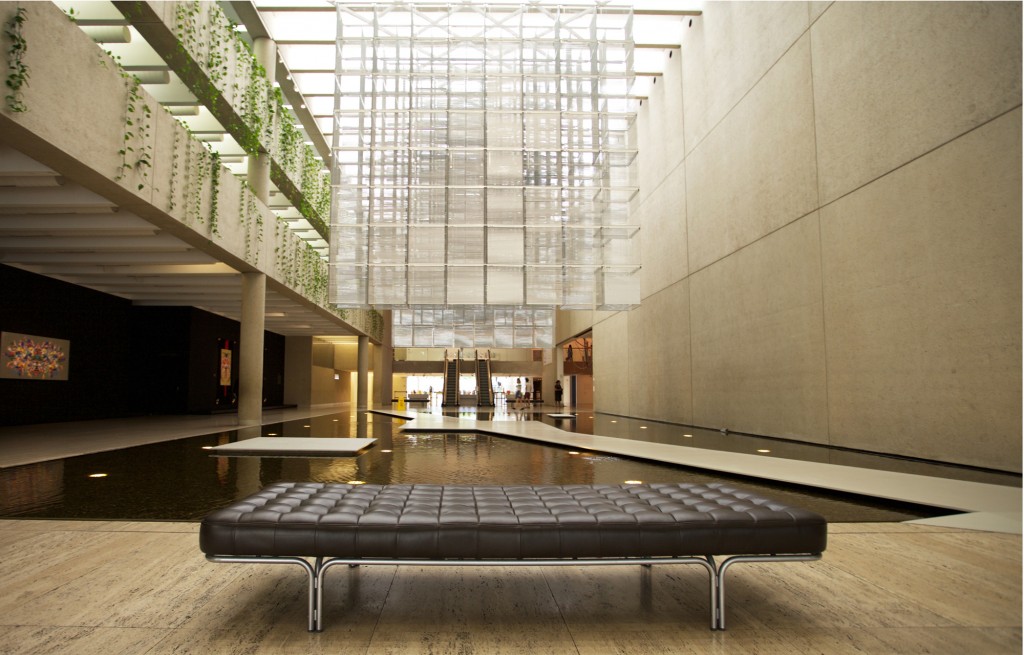
The 8th Asia-Pacific Triennial of Contemporary Art is one of the most important art events in this region. To bring you this special Peril edition, writer and curator Kate O’Hara and I visited QAGOMA in Brisbane for their the opening weekend. Immersed ourselves in the vibrancy of the program, we went from performances to forums, artist talks to panel discussions. Non-stop over three days, a corner turned and there was another live performance, another crowd gathering while the artists talked about their work. Spanning across the Asia-Pacific region with over 80 artists from over 30 countries, the scale of APT8 presents itself as an exhibition of cultural significance.
The theme of performance is at the core of APT8. Performance practice is one of the most diverse trends in contemporary art today. From live performance within the gallery space, performative practice with screen-based medium, to interdisciplinary performative work that crosses over visual arts, dance or narrative-driven storytelling, APT8 explores the theme of performance as an expanding practice that has multiple dimensions.
Cambodian-American artist Anida Yoeu Ali’s visually striking and playful work ‘The Buddhist Bug’ (2009-) is one of the most highlighted projects of APT8, where the project engages with the audience through different types of performances.
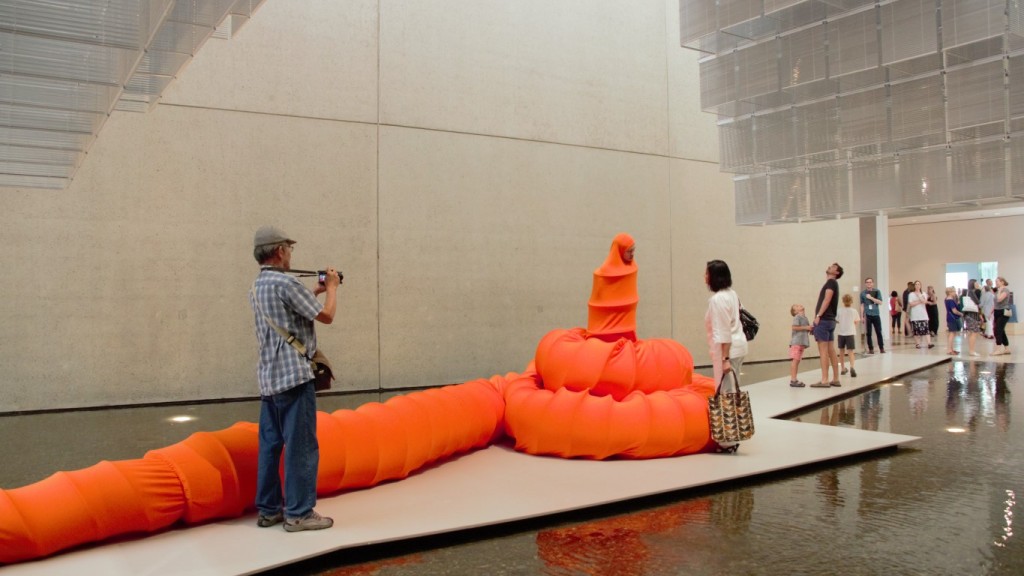
The gentle character situates itself within the curious crowd. As people gather around the bright orange hijab-wearing ‘bug’, its slowness captivates its audience. The bug’s enigmatic gaze is somehow intimate and distanced, creating an aura of friendliness, familiar yet uncertain.
The response from the crowd to this performance is instant. While the image of her performance lingers in my mind, the experience of her performance belong only to that audience. To this end, when she transforms the work to a two-channel video installation, the performative aspect of the project also evolves. ‘The Buddhist Bug, Into the Night’ (2015) is a video documentation of the artist’s performances in Phnom Penh, Cambodia. The ‘bug’ travels from local food corner to the red light districts of Phnom Penh. Watching the projection of the performances, some filmed in time-lapses, evokes a completely different kind of viewing experience. The screen becomes the performative platform while the performance embeds into an immaterial image that exists solely in representation.
Anida Yeou Ali’s work is only one example of the many approaches to performance at APT8. There are artists such as siren eun young jung (South Korea), Justin Shoulder and Bhenji Ra (Australia) who expand their independent practices from live performances to video, and from video back to live performances. APT8 Cinema program, on the other hand, explores performance and fiction through the lens of video and the language of cinema.
Other works such as ‘All we leave behind are the memories’ (2015) by Asim Waqif (India) propose a different kind of performativity, the kind that is ‘performed’ by the audience. The viewer engages with the ever-evolving living sculpture, where one almost becomes the subject of the performance. There are also a number of performances in which the artist performs during the exhibition, either for a brief moment or for longer duration, leaving behind a structure or an installation as part of the exhibition. Indonesian artist Melati Suryodarmo’s 12-hour performance ‘I am a ghost in my own house’ (2015) is a great example.
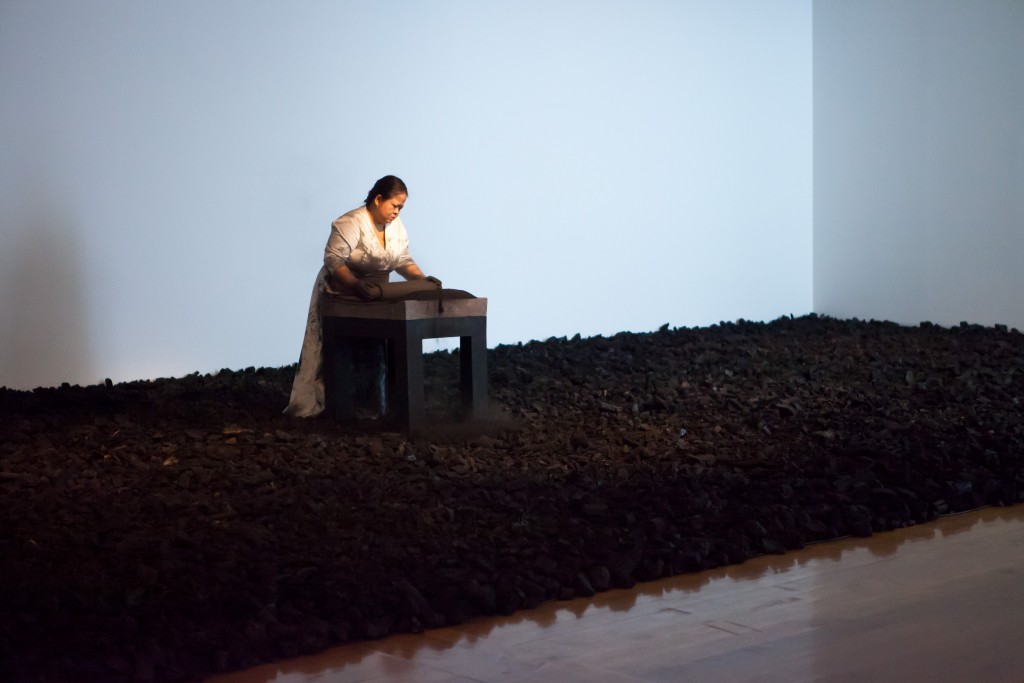
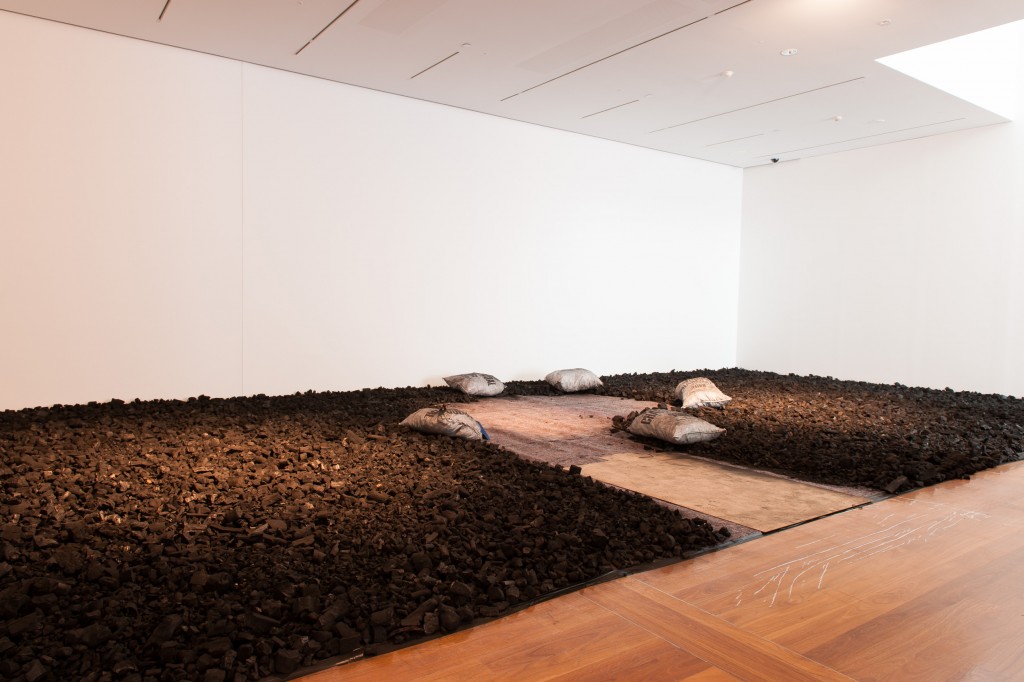
installation view / Image courtesy of QAGOMA
Beyond performance, APT8 also presents itself of great cultural significance, playing the role of a leading Australian institution in the Asia-Pacific region. Providing an excellent platform for artists, QAGOMA positions itself as a state-of-the-art gallery that fosters dialogues within the region. For me, some of the regional politics around identity, place, socio-economic changes were unfortunately lost within the beautiful white cube of QAGOMA. Some works required public engagement outside of the gallery space (and not just outside of the galleries in the front lawn); while others could have been embedded within the streets of Brisbane. In some ways, the white cube struggles to contextualise some of the works (and working conditions) in our region. Either to evoke a sense of discovery, maintain its socio-political contexts or to break down the barriers built by the gallery, some performances simply do not sit well with immaculate white spaces.
In separate conversations with curator and academic Iola Lenzi, JavaArts (Cambodia) director Dana Langois, and Chương-Đài Võ, researcher at Asia Art Archive, Kate O’Hara speaks to Southeast Asian arts professionals who all face different levels of challenges in archiving and collecting.
Reflecting on her own experience working at Romeet Contemporary Art Space in Phnom Penh, Kate’s discussion with Iola Lenzi pointed to the disparity in resources and the consequences of these working conditions had on their curatorial practices.
Apart from lack of resources, climatic conditions and local cultures mean that there are ongoing negotiations and complex relationships between artists, local government, private sector and collectors. These conditions have serious implications on curatorial freedom, artistic integrity and public access. In a further conversation with Chương-Đài Võ, they explored the importance of building an archive for Asian art and how accessibility — to artists, curators, and general public — was at the core of such exercise.
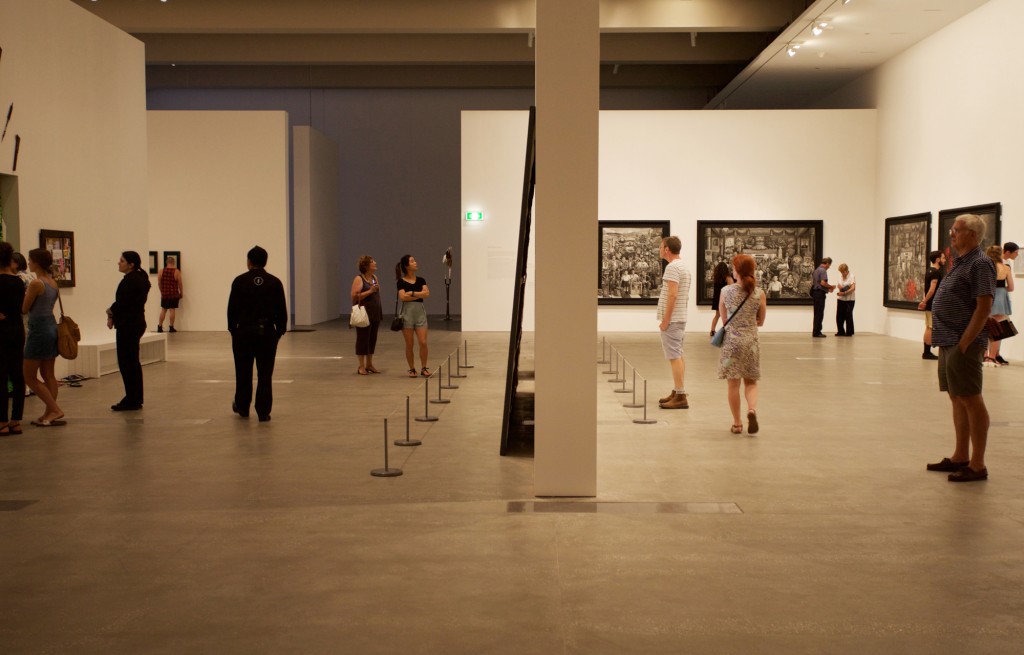
Not only is it an issue for the sustainability and growth of the arts sector, archiving in practice questions problems of ethics, representation and authorship in the region. While some artworks are deteriorating in poor climatic conditions in Southeast Asia, the role of a public institution could, potentially, go beyond (re)presentation. My questions then become: Beyond collection, how does a public institution contribute to this conversation? Can a public institution in Australia, for example, provide enough critical contexts to its audience, in its immaculate and impressive white cube space that is far removed from the artwork’s place of creation?
It is in the nature of a major arts event like APT8 to stretch out their many curatorial arms to survey our contemporary arts scene in the region today. Framed within the contexts of now, of contemporaneity, I feel that APT8 successfully surveyed some of the most exciting artists in our region, and created a program that is genuine and accessible. However, while the triennial program is exciting and exceptionally engaging, some of these regional issues remain unseen behind the impressive sculptures, screens and canvases at APT8.
This edition is about celebrating the vibrant and rapidly changing Asian-Pacific arts scene as much as it is about exploring the challenges faced by artists and curators working in our region today. We have brought together a mix of artists’ interviews, conversations with curators and arts professionals working in Asia-Pacific region, a dialogue with QAGOMA Associate Curator Tarun Nagesh, a photo essay by Kristine Kenins and an essay on Anida Yeou Ali’s expanding practice. I would like to give a special thank you to Kate O’Hara who co-edited this edition.
I hope you enjoy this special edition.

